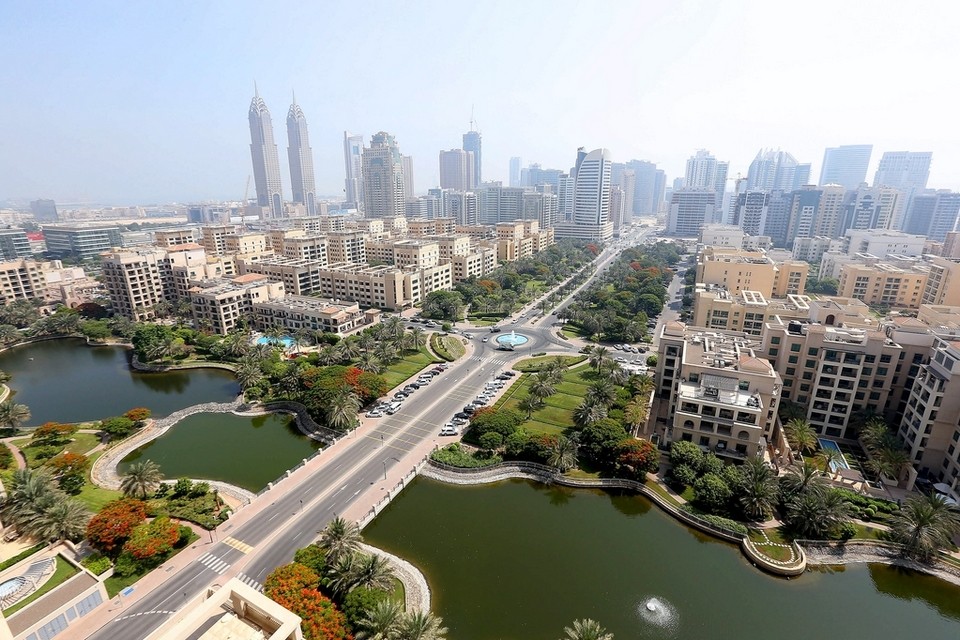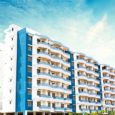
With a softening market as a bargaining chip, tenants have been getting more favourable terms from landlords in the past several months and could even find more attractive deals this year. While rents in Dubai’s freehold areas dropped by an average of 7.9 per cent for villas and 2.9 per cent for apartments last year according to JLL, thousands of new housing units expected to be delivered this year could sustain the downward pressure on rents, forcing further concessions from landlords.
Indian tenant Natasha Kasliwal, 33, benefited from the current slow market after her landlord reduced her rent by Dh7,900 this year. She plans to go on vacation with her family by the end of the year, utilising her savings on rent. She’s been renting a three-bedroom villa in The Springs with her family for the past four years. Kasliwal currently pays a rent of Dh162,000 per year.
“Our last rent increase was in 2014. Since then it has been stable and now we have got a reduction as the owner is aware that cheaper options are available,” says Kasliwal. “I would not say housing in Dubai is unaffordable, but if you want to live in a good area of the city, you have to pay a big price, unlike in other countries.
“Therefore, any rent fall will increase the savings of individuals in Dubai, especially with the new tax coming by the end of the year. It will be a great help.”
Many tenants have also moved into newer communities without worrying about higher rents. For Filipina tenant Rosalie Poblete, 53, living close to her workplace in Dubai Media City is a key consideration that has made her move into a two-bedroom apartment in Barsha Heights, formerly Tecom, from a villa in Satwa. The rent for both units is Dh95,000 per year.
“The facilities that I need are available in both communities, but living in Tecom gives me the advantage of reaching my office in six minutes, whereas earlier I had to spend 45 minutes travelling to work,” she says. “Secondly, for a two-bedroom apartment in Satwa, the [annual] rent is around Dh110,000-Dh120,000, which is expensive compared to a similar apartment in Tecom that I got for Dh95,000.”
Market performance
In the first quarter, there was little change in rents or prices in the apartment and villa segments, according to a JLL report, indicating that the residential sector is close to the bottom of its cycle. The report added that economic challenges in the domestic and international fronts might push any recovery in Dubai residential prices towards late this year.
According to Chestertons, average apartment rents dropped by one per cent in Dubai in the first quarter, but apartments in Dubai International Financial Centre (DIFC) bucked the trend with a four per cent average quarter on quarter increase. “In Dubailand, rents fell by an average of almost four per cent, with similar drops in Jumeirah Lakes Towers [JLT] and Remraam,” according to Chestertons. “Villa rentals also fell on average by one per cent, with villas in Victory Heights, where rents dipped eight per cent on average, and The Springs, where rents dropped six per cent, experiencing the greatest drops. While The Lakes saw rents increase by almost six per cent.”
Ivana Gazivoda Vucinic, head of advisory and research at Chestertons Middle East and North Africa (Mena) says, “We have seen the steady reduction in prices in the rental market recently due to an increase in the number of apartments and villas handed over in a variety of locations. Throughout 2017, we’re expecting this trend to continue with thousands of apartments and villas set to be released to the market. This ultimately creates greater choices for tenants and places more pressure on market rates, resulting in reduced prices.”
Vucinic adds: “As the World Expo 2020 creeps ever closer, an increase in population could help stabilise the market and minimise the impact of new deliveries.”
Year-on-year drop
On average, there was a two per cent drop in apartment rents in the fourth quarter across all areas and a three per cent decline year-on-year. “Apartments in JLT and Business Bay fell by eight per cent over the course of the year, International City and DIFC by seven per cent,” says Vucinic. “Only Downtown Dubai held its rental rates from 2015. Average villa rents in the emirate also fell two per cent from the third quarter and five per cent annually.
Vucinic expects the market to remain flat in the first half of the year. “The macroeconomic environment has undoubtedly had an impact on price,” she says. “Private company and government cuts have had an impact on both the job market and the benefits many jobs offered, including housing allowances. Many people are sending families home and choosing to downsize, which is leaving larger apartments or villas empty, causing landlords to reassess their asking price.”
Large vs small
Suraj Rajshekar, general manager of Rocky Real Estate, says bigger-size properties have endured a substantial negative impact on rents, while smaller ones have been steady or have not registered a marginal decline. He says this trend applies to both leasehold and freehold areas.
“The mid-income assets such as one- to two-bedroom apartments that rent between Dh50,000 and 150,000 are all doing well, enjoying good occupancy,” says Rajshekar. “Their rents have been either steady or have seen marginal softening. However, rents for high-end properties above Dh150,000 now take a lot of time to lease, and rentals saw a larger decline due to weak demand, wherein the landlords succumb to pressure and give good rates to tenants to keep units occupied.”
Rajshekar says the situation is similar in the office segment. “Office sizes of 32.5 sq m and 111 sq m see good occupancy and rents are more stable since the demand for small units is significant and not much supply is available in areas with good infrastructure and Metro connectivity,” he says. “Rents on large-size offices from 139m²-371m² and up to 929m² are mostly affected. The economic situation globally and locally have impacted the demand for bigger office units.”
Rajshekar says the present market condition is mainly affected by global and regional economic issues. “After witnessing rents softening for the last 24 months, we expect stability and growth in prices going forward,” he says. “Softening is going to stop and there is going to be stability in the rental market with growth starting from 2018.”
Sanjay Chimnani, managing director of Raine & Horne, says some areas such as Dubai Silicon Oasis, Q-Point, Dubai Sports City and Discovery Gardens were not seriously affected by any price correction. “Units renting up to Dh85,000 [per year] have been steady, those between Dh85,000 and Dh200,000 had dropped by 7-10 per cent and those over Dh250,000 dropped by 15 per cent,” says Chimnani. “The apartment rents in leasehold areas, mainly Bur Dubai, Karama and Deira, have not been affected. Most tenants have been there for a very long time because they are comfortable to have their workplace and home close by, along with day-to-day necessities and facilities available in proximity.
“However, tenants in leasehold villa areas such as Jumeirah, Umm Suqeim, etc, have seen price alterations and are far more flexible towards changing homes in an alternative location to get the price benefit.”
Meanwhile, office rents have become more reasonable in past 18 months. “Shell and core office rents in Business Bay that were priced between Dh120 and Dh140 per square foot have come down to Dh75-Dh100 per sq ft,” says Chimnani. “In JLT, rents that were Dh100-Dh110 per square foot are now available at Dh65-Dh80.
“The reduction in office rents has allowed businesses to take up bigger spaces and new companies to open, which in turn is good for the overall economy.”




